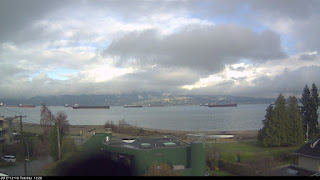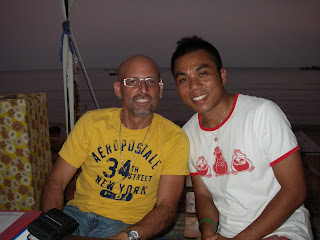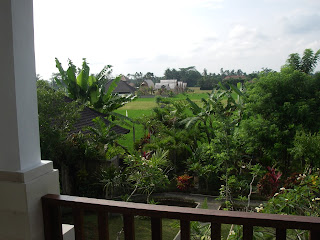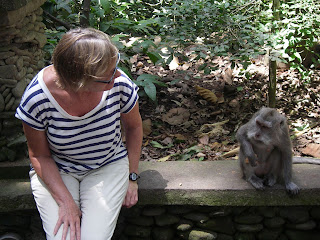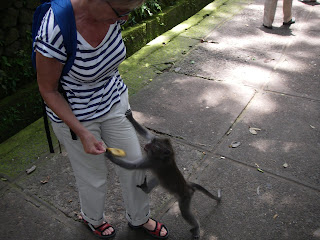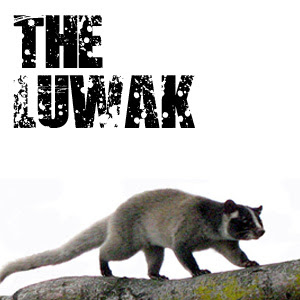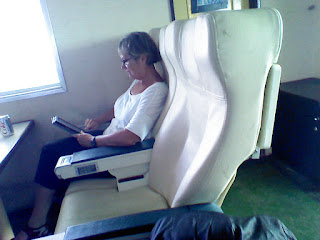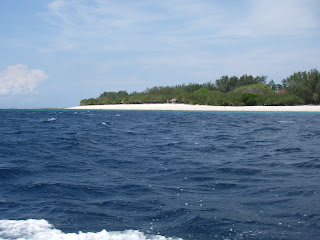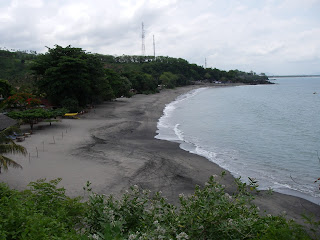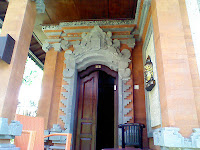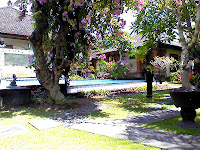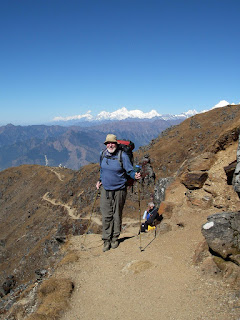We arrived in San Francisco today (Sept 3). Sapphire is staying in San Francisco; our crewing ends here.
 |
| The Golden Gate Bridge -- in the Fog |
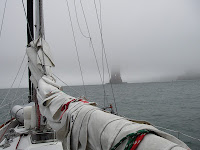 |
| The Bridge -- still in the Fog |
We sailed non-stop from Neah Bay (Aug 28) to Drakes Bay (Sept 2). Approximately 28 miles north of San Francisco, Drakes Bay provided a wonderful, calm anchorage after 5 nights at sea -- a nice place!
It was a good trip, sailing wise. We
sailed a least 80% of the way; max winds were about 32 knots (NW, from behind) and more often 10-20 kn NW. We started out, after rounding Cape Flattery, with 20-25 kn SE winds on the nose -- a bit uncomfortable -- but these improved later the next day, eventually coming around to NW. We headed out to about 60 nm offshore, coming in closer around northern California. Interestingly, the biggest winds were definitely off of Cape Mendocino (30-35 kn). Of course, it was foggy coming in under the Golden Gate Bridge.
Not once were we worried for our safety. SV Sapphire is an excellent boat (Cambria 48), and skipper Jay knows his boat well and was conservative, not sailing her too hard, thus making it more comfortable for all of us.
There were three of us crew who came along to help Jay get Sapphire to SF: Brent, Michelle & David. We three crew worked well together and got along -- thanks Brent! (Perhaps we weren't "railmeat", but we were often made to feel like it.) Queen of the galley, Michelle used her experience (learned from our trip from Hawaii with Jim on SV Berkana) to prepare meals which could be heated-up in one pot and eaten in a bowl. Before leaving Vancouver, Michelle pre-prepared and froze
five meals. We were a well-fed crew thanks to Michelle.
Sapphire is docked at Pier 39 -- an incredibly rolly, noisy berth with seemingly thousands of tourists staring down at you. Not our cup of tea -- we will not make Pier 39 a stop for Pelagia next year!
Michelle and I have moved to the comfort of a hotel -- we fly back home on Thursday.
Although we had previously done a much longer offshore passage (Hawaii to Vancouver in 2004), this trip taught new things, and reinforced things we knew but perhaps had forgot. We've crewed offshore before, but on this trip we gained further insight into how crewing has its ups and downs (especially
downs).
Advice for future: It is so important
before agreeing to crew for
all involved to fully understand responsibilities and any limitations (e.g., things you are not allowed to do). What may seem obvious (and normal) is not always the case once you untie the lines. Try and learn these before you sign on. The "crewing" insights were unexpected but definitely helpful for our sail south on Pelagia next year.
Overall, we
think we are glad we did this trip. Offshore sailing is not always "fun", but we did re-gain experience and confirmed we are able to take Pelagia on offshore passages. Our crewing on Sapphire to SF this year makes us more confident and competent for next year's voyages (and better "skippers" working/sharing with crew).
UPDATE 2013: We sailed Pelagia south to Mexico. When we were in San Francisco, we spotted SV Sapphire still moored at Pier 39 (on the other, quieter, side), no one on board, and listed for sale. Go figure.
